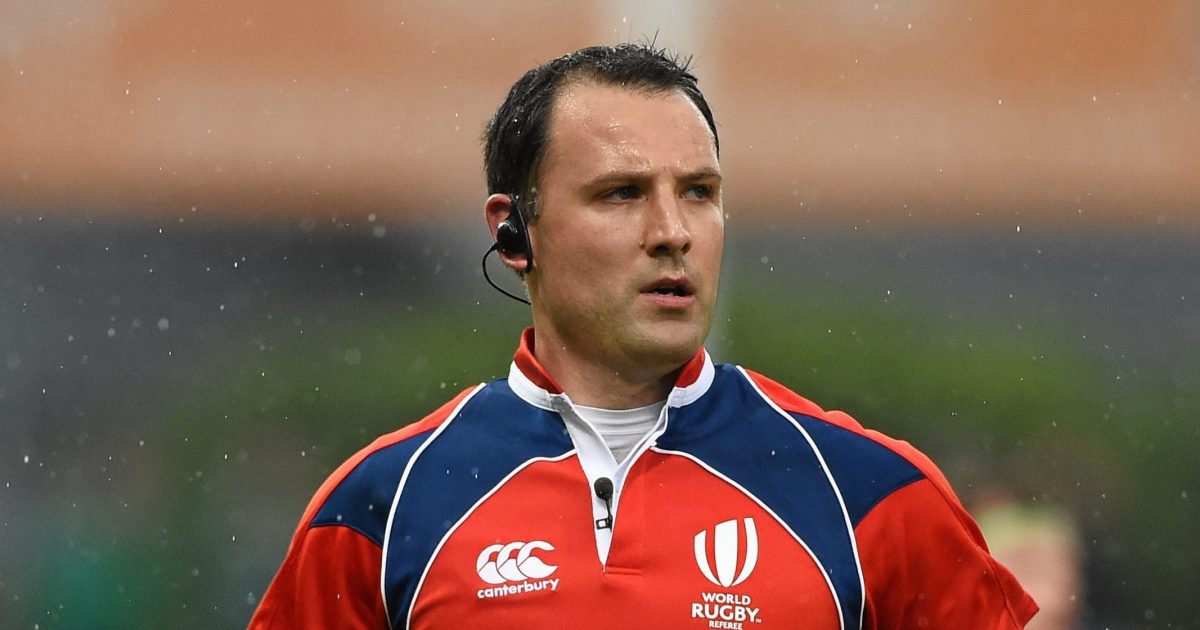'Rugby has to revisit the purpose of the TMO and get referees to make decisions'

It is a sign of the times that the identity of the TMO has become almost as significant as that of the match referee, while touch judges have become almost anonymous.
Pushing the point, it could almost be argued that the referee’s assistants (as they are now known) serve very little purpose beyond occasional input on midfield offside and providing the half-time jelly babies.
Dubious touch line calls, tight decisions on kicks at goal and monitoring of foul play used to be a big part of their role, but when any doubt exists where does the ref now look for advice – the TV van.
Of course, none of this is in a protocol anywhere – but then neither do precise job descriptions exist which define the respective responsibilities and interface between the man holding the whistle and his TV-watching assistant.
To many rugby watchers this seems a huge problem, since no two matches ever seem to feature an identical working relationship between the two – and as a result we get inconsistency in processes used and outcomes reached.
For example – does the referee call what happens in front of him as he sees it and wait to be corrected by the man in the van?
And does the TMO have the authority to overrule the whistler or simply offer him items for further consideration?
What then happens – as per Fiji’s red card against Wales – when the ref is clearly wrong in his interpretation?
Similarly, while some referees ask for checks to take place on the hoof – thus minimising stoppages to the game – others wait for a break in play then ask the TMO to rewind through a lengthy spell of play to scrutinise a tight call.
8?? 9?? Premiership tries
2?? 0?? England tries
8?? disciplinary bans
6?? top-flight clubs
Chris Ashton has certainly had plenty of highs and lows…but will it all end here?https://t.co/zbtepgoZX1— RugbyPass (@RugbyPass) December 13, 2021
Rugby union opened a can of worms with its introduction of technology since it is not a sport which lends itself to black-and-white decision making.
In cricket your foot is on the line, in front of it or behind it and you are given in or out following a referred stumping appeal on that basis.
Similarly, when adjudging an lbw, having identified where a ball pitched the technology also tells the third umpire where it struck the pad and – based on historic data – its predicted path. The batsman is in or out.
Likewise, a tennis ball clips the line and is in or misses it and is out.
And while the use of VAR in football is far from controversy free, it does now seem that it has nailed down a method which everyone accepts. While Aston Villa’s players were far from happy about their first-half goal against Leicester being ruled out, the man in charge of the technology intervened decisively, followed a defined process and demonstrated that Kasper Schmeichel’s hand was on the ball long enough for him to have possession of it in law.
Contrast this with Nick Tompkins’ ‘was it, wasn’t it’ knock-on which turned the Wales v Australia test match last month. A real shade-of-grey decision where technology proved inconclusive despite a lengthy stoppage in play.
He's back in international rugby! ???https://t.co/LTCUXplefy
— RugbyPass (@RugbyPass) December 13, 2021
Greg Garner was a high-profile referee whose career encompassed over 100 English Premiership games plus 40 in Europe and 16 test matches before he spent four years as the Pro-14’s Elite Referee Development Manager.
And he believes plenty of scope exists to improve the use of technology in rugby and as a result to improve the end product.
“Since I stepped away from involvement with rugby on a professional level I now love watching it with my sons as a fan,” he says.
“I also watch a lot of football, and the differing approaches to the use of the TMO and VAR are now very apparent to me.
“When I was at Cardiff watching one of the Autumn Internationals I found myself trying to think of another sport where the referee gets more than one go at making a decision.
“In every other sport the ref makes a decision then, once it is referred, another official has responsibility for making the final call.
“But in rugby we have a protracted debate whereby the referee remains part of the decision-making process.
“This means that the referee can stop the game to ‘check’ if his/her decision was correct rather than becoming skilled in making decisions in real time.
“We ultimately want referees who have the skills and confidence to make the correct decision live instead of appearing unsure or unwilling to make a call for fear of getting it wrong.
“Refereeing is all about decision making – surely we have to get to a point where the guy or girl with the whistle makes the call after which the TMO only intervenes if there is an obvious mistake? Or if they refer a decision, as in football or cricket they are then not a central part in the decision-making process.
“We have to revisit what the purpose of the TMO is. Let’s establish why he/she is there then create a process-driven approach which encourages referees to make decisions live while also enabling the TMO to intervene if there is a clear and obvious error. That is what happens in every other sport, why should rugby approach things so differently?
“Rugby has reached a situation where a match can take two hours due to long and protracted TMO reviews where the officials debate law and watch replays. No-one wants that so we have to encourage referees to use the key skill that got them into the professional game, making accurate decisions in real time.”




























